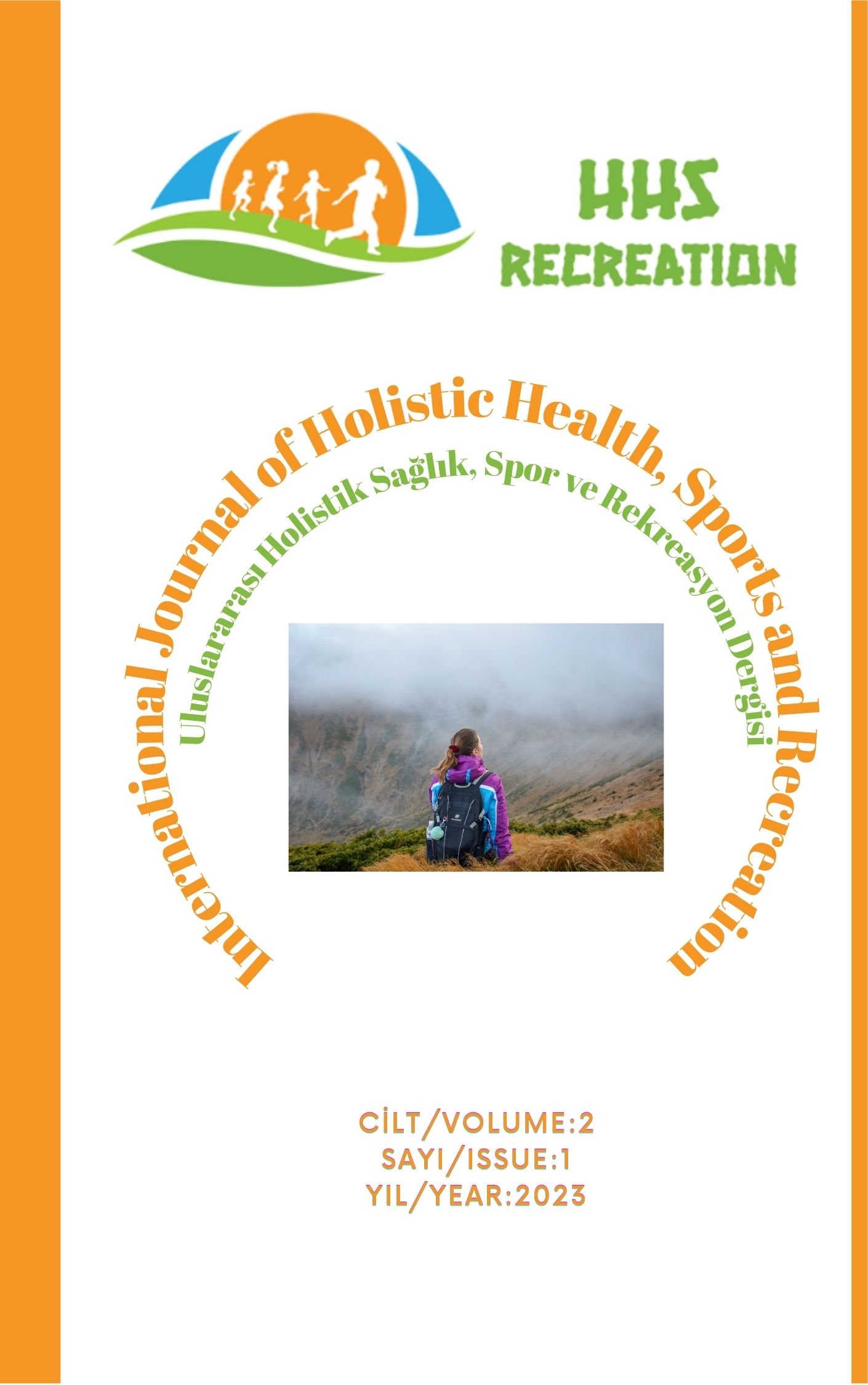Assessing The Teaching Quality of Physical and Health Education Teachers in Junior Secondary Schools in Lagos State Nigeria
DOI:
https://doi.org/10.5281/zenodo.8008104Keywords:
Teaching quality, physical education, health education, teachers and junior secondary schoolsAbstract
The quality of teaching has become a prominent issue in the area of physical and health education due to the new trends in teaching pedagogy, assessment, aids, modes and the content of the curriculum. However, the teaching quality of physical and health education can be determined using co-variates such as the curriculum content knowledge, reflections and subject status. This study therefore assessed the teaching quality of Physical and health education Teachers in Junior Secondary School in Lagos State, Nigeria. The study adopted the descriptive survey research design. All the Junior Secondary Schools in Education District IV consisting of Apapa, Surulere and Mainland Local Government Areas were covered in the study. Two hundred and thirty-Five Physical and health education Teachers were purposively sampled for the study. A standardized questionnaire with reliability co-efficient of 0.83 was used as an instrument to collect data for the study. Three hypotheses were tested at 0.05 level of Significance. Data collected were subjected to frequency counts and percentages and inferential statistics of chi-square. The study established that two of the hypotheses were rejected except for one, and eleven respondent’s mortality was recorded in the study. There was a significant influence of the co-variates on the teaching quality of physical and health education in junior secondary schools in education district IV. it is therefore recommended that among others that upgrading teacher’s knowledge or physical and health education will be an added advantage of the subject and this can be achieved by internship trainings and courses in other to maintain a standard level.
References
Adedeji, J. (2009). Global Strategy on Diet, Physical Activity Health. Federal Government of Nigeria. proceedings from the International Conference on Sport and Education Celebrating 2005 United Nations International Year of Sport and Physical and health education, Nigeria: Ministry of Sports and Tourism. pp. (125-138).
Adegbamigbe, A.B.& Taggart, A. (2014). Quality Teaching Perception for Performance Excellence in Junior Secondary School Physical and health education. Journal of Nigeria Association of Physical, Health Education, Recreation, Sport and Dance. (JONAPER-SD). 3 (1): 1-20.
Adegbamigbe, B.A. (2002). Teachers Perception of quality teaching in Junior Secondary School Physical Education in Lagos State, Nigeria. https//ro.ecu.edu.au/theses 718
Aiyejuyo, L. J. (2004). Leader behavior and Job satisfaction as predictors of performance of States Sports Council Coaches in South-West, Nigeria. Unpublished Ph. d theses, Lagos State University.
Apara, F.A, Okuneye, R.O & Lafiaji-Okuneye, B.B (2022). Subject merger implication on contents coverage of PHE in junior secondary School curriculum in Nigeria. A paper Presented at the Conference of International Council for Health Physical Education and Recreation, Sports and Dance.
Brophy, J.& Good, T.L. (2009). Teaching. International Bureau of Education. Available at www.ibe.unesco.org.
Fatai, L. (2014). Physical and health education and Sport: Toward the Achievement of Millennium Development Goals (MDG). Nigeria Society for Physical and health education and Sport. In proceedings 3rd International Conference of Nigerian Society for Physical Education and Sport.
Federal Government of Nigeria. (2005). Survey of the State and Status of School Physical Education Report, Abuja: University of Nigeria.
Hellinson, D.R & Templin, T.J (1991). A reflective approach to teaching Physical Education, Champaign II Human Kinetics.
Jewett, A.E & Bain, L.L (1985). The curriculum Process in Physical Education, Dubuque, I.A: Brown
Michaels, K. (2011). Research in Nigerian Physical and health education and Sport: Towards the New Millennium. In Proceedings, Conference on Nigerian Sport Science and Physical and health Education. Nigeria: University of Nigeria. pp. 15-19.
Ministry of Education. (2007). “Global Vision of the Situations, Trends and Issues of Sports and Physical and health education in Schools”. Paper presented at the International Conference on Sports and Physical and health education. 30th October – 2nd November, 2007, Lagos. NAPER-SD and UNESCO (2007). Ministry of Education www.educationcounts.govt.nz/goto/BES.
Mitchell, E. (2010). School Health Policies and Programme Study 2010. Journal of School Health. Volume 71, Number 7, September, 2010.
Ojeme, E (1990). Teaching Physical Eduation: A conceptual analysis with implications for Teachers. Journal of Teaching Physical Education 5(4), 221-229
Okoye, N.S.; Momoh, S.O.; Aigbomian, D.O & Okecha, R.E. (2008). Teachers’ Quality Instructional Strategies and Students’ Performance in Secondary School Science. Journal of Instructional Psychology. 34 (4) 204-211.
Rich, J.M. (1984). Professional Ethics in Education. Springfield, IL: Charles C. Thomas. ED 261 641(not available from EDRS).
Raundenbush, S.W & Bryk, A.S (2002). Hierarchical linear models: Applications and data analysis methods advanced qualitative techniques in the Social Sciences. doi.10.2466/pms.2002.94.2.671. American Journal of Education.
Siedentop, L & Tannehill, K. (2000). “Global Vision of the Situation. Trends and Issues of Sports and Physical and health education” In Proceedings: International Conference on Sport and Education Celebrating 2005 United Nations International Year of Sport and Physical and health education. Bangkok: Ministry of Sport and Tourism. Pp. 32-48.
Schulman, L.S. (2007). Knowledge and Teaching: Foundations of the new reform. Harvard Educational Review, 57, 1-22
Schmoker, M. (2006). Results Now: How can we Achieve Unprecedented Improvements in Teaching and Learning. Alexandria, V.A.: ASCD.
Suchon, N (2012). Nigerian Society for Physical and health education and Sport (ASPES). 2010. The 3rd International Conference of Nigerian Society for Physical and health education and Sport, University of Education.
Wilson, L. (2009). Practical Teaching. A Guide to PTLLS and DTLLS. Andover: Cengage.
Wood, D.J., Bruner, J.S., & Ross, G. (1976). The Role of Tutoring in Problem Solving. Journal of Child Psychiatry and Psychology. 17(2), 89-100.
Wragg, E.C and Brown, G. (2001). Questioning in the Secondary School. London: Routledge Falmer.
Young, N.H. (1987). Paidagogos: The Social Setting of a Pauline Metaphor. Novum Testamentum 29:150.
Downloads
Published
How to Cite
Issue
Section
License
Copyright (c) 2023 International Journal of Holistic Health, Sports and Recreation

This work is licensed under a Creative Commons Attribution 4.0 International License.



